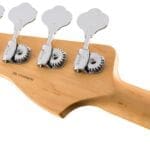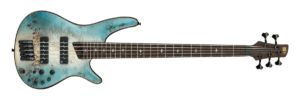Last update 12/11/2023
What bass guitar should I buy? Part melody, part rhythm? No one can deny a bass guitar’s importance in today’s popular music. Our bass guitar basics cover all the critical information you need to know about the bass guitar.
Table of contents
- What Bass Guitar Should I buy
- How to Play the Bass Guitar (the basics)
- Basic Bass Guitar Techniques (the basics)
- Bass Guitar Basics – Which is the best bass guitar for you?
- Bass Guitar Basics | Construction
- Tonewoods | A comparison
- Ash and Alder
- 6, 5, or 46 Strings?
- Fender Bass guitar Fretless
- Acoustic Bass Guitars
- Bass headstock
- Scalelength
- Fender Bass The Tuners
- The guitar’s intonation
- The neck | Bolt-on or Neck-Through
- The Fingerboard
- The Number of Frets
- The Pickups
- What Bass Guitar Should I Buy – Wood types
- What Bass Guitar Should I Buy? Conclusion
- References
What Bass Guitar Should I buy
The bass guitar is explained for new beginners.


The bass guitar is a four-stringed musical instrument that is played with the fingers or a pick. It is a popular choice for beginners because it is relatively easy to learn to play and is used in a wide variety of musical genres, including rock, pop, jazz, and country.
Parts of the Bass Guitar
The bass guitar is made up of the following parts
Headstock


This is the part of the bass guitar that contains the tuning pegs. The tuning pegs are used to adjust the pitch of the strings.
Neck
This is the long, thin piece of wood that connects the headstock to the body of the bass guitar. The neck is where you will find the frets. Frets are metal bars that divide the neck into half steps. When you press down on a fret, you shorten the string, which changes its pitch.
Fingerboard


This is the flat piece of wood that covers the neck. It is where you will place your fingers to play the notes.
Body


This is the main part of the bass guitar. It contains the pickups, which are used to amplify the sound of the strings.
Bridge
This is the part of the bass guitar that anchors the strings at one end. It also contains the saddles, which can be adjusted to adjust the action of the bass guitar. Strings: The bass guitar has four strings, which are tuned from lowest to highest: E, A, D, G.
How to Play the Bass Guitar (the basics)
To play the bass guitar, you will need to learn how to hold the instrument correctly and how to use your fingers or a pick to play the strings.
To hold the bass guitar, sit down in a comfortable chair and place the instrument in your lap. The neck of the bass guitar should be pointing to the left, and the body of the bass guitar should be resting on your right leg. You can use a strap to help support the weight of the bass guitar.
To play the bass guitar with your fingers, place your left hand on the fingerboard and use your fingers to press down on the frets. To play a note, pluck the string with your right hand. You can pluck the string with your thumb or your index finger.
To play the bass guitar with a pick, hold the pick between your thumb and index finger and pluck the strings with the tip of the pick.
Basic Bass Guitar Techniques (the basics)
There are a few basic bass guitar techniques that you should learn before you start playing songs. These techniques include:
Plucking the strings
This is the basic way to play the bass guitar. To pluck a string, simply use your right hand to pull the string away from the body of the bass guitar and then release it.
Hammer-ons
This is a technique where you play a note and then quickly press down on another fret without releasing the first fret. This will create a higher-pitched note.
Pull-offs
This is a technique where you play a note and then quickly release the fret without plucking the string. This will create a lower-pitched note.
Tips for Learning to Play the Bass Guitar
- Start slowly and focus on learning the basics. Don’t try to learn too much too quickly.
- Practice regularly. The more you practice, the better you will become at playing the bass guitar.
- Be patient. It takes time to learn to play any musical instrument. Don’t get discouraged if you don’t master the bass guitar overnight.
- Find a good teacher. A good bass guitar teacher can help you learn the basics and develop your skills.
- Have fun! Playing the bass guitar should be enjoyable. If you’re not having fun, you’re less likely to stick with it.
- Playing the bass guitar is a rewarding experience. It is a great way to express yourself musically and to have fun with friends. With a little practice, anyone can learn to play the bass guitar.
Bass Guitar Basics – Which is the best bass guitar for you?
The marketplace for electric bass guitars can be very confusing, just as with most other guitar types, electric guitars, for example. The array of options and configurations can make your head spin. However, we aim to educate you on the instrument to choose and buy the right electric bass.
Bass Guitar Basics | Construction
Tonewoods | A comparison
Many factors determine the various tonal properties of wood for a bass guitar. The type of wood for the top is crucial for the instrument’s tone.
However, the wood used affects specific properties of the bass’s tone or any other type of guitar. Other design considerations are just as important: the maker’s skill and the tonewood quality used to construct the bass.
Tonewoods, however, can be a deciding factor for building an exceptional bass guitar.
Ash and Alder
Alder and Ash’s Woods are incredibly similar sonically; both provide good, excellent sustain and well-balanced tone that is beautifully resonant and rich in nice harmonic overtones. Guitar makers commonly choose ash because it is a more attractive grain, primarily when used with a semi-transparent finish.
Agathis
Lots of excellent entry-level basses use agathis as they are relatively cheap. Tonally, it is between mahogany and ash/alder. It offers a rich tone that resonates and emphasizes the lower midrange frequency over its upper frequency.
Mahogany
Mahogany bass guitars are warm and full-bodied sounding. Furthermore, the medium density and its low resonance of mahogany give the lower register of the bass guitar a pronounced emphasis and roll off the faster string attack that you might expect from an alder or ash body.
Basswood
Basswood is a tremendous body wood for bass players who play diverse music. One appealing quality of basswood is blatant softness, which absorbs vibrations. Furthermore, it has a short sustain, which is excellent for fast or more complex playing styles.
Maple
Maple is a dense wood; it offers exceptional sustain and a bright, sharp tone. Also, many bassists and recording engineers love maple because of its clarity and definition.
6, 5, or 46 Strings?
There are many types of bass guitars, and it’s tempting to say that you’re better off sticking to a traditional 4-string bass if you need to ask. By design, regular 4-string basses may have much narrower necks than 5- or 6-string basses tuned in a standard E-A-D-G format. Furthermore, this makes them much easier to handle and learn to play.


However, some styles of music do favor 5-string basses. Modern worship music and country appear to have more songs with roots in B. However, its B-E-A-D-G tuning is ideal.
In addition, regardless of style, 5- and even 6-string basses offer players lots of options to expand their creativity and more room to expand creatively. Furthermore, if you perform a lot of bass solos, then a 6-string bass-tuned B-E-A-D-G-C will let you pull off some nice lines.
Fretted vs. Fretless
Be aware that there are two different fretboards to consider when choosing a bass guitar: fretless and fretted. A fretted neck is the standard guitar neck. It has steel frets that divide each half-step for the chromatic scale.
Fender Bass guitar Fretless
The steel frets make finding the right notes much easier, especially when starting on the instrument. However, a fretless bass features a neck with no steel frets; it is just smooth wood, similar to an upright or violin bass.
Many bass guitar players say that fretless basses offer a much more smooth, warmer tone. The pitch for the note being played varies depending on your finger on the fingerboard. Advanced players rely on muscle memory to place their hands properly; however, practice always makes perfect.
Acoustic Bass Guitars
Suppose you’re searching through all the different bass guitars and decide you don’t want a bass that needs an amp. An acoustic bass might be the solution for you. It will have all of the characteristics of an acoustic 6-string guitar. However, an acoustic bass produces sound through a resonant hollow guitar body.
Bass headstock
Fender Bass The Tuners
Scalelength


Longer necks offer a more defined sound from the low strings. However, a shorter scale is acceptable for 4-string bass and suitable for players with smaller hands.
Fender Bass The Tuners
The guitar’s intonation
The guitar’s intonation is a term that refers to whether or not all the notes play in tune as the guitarist plays up the neck. All notes should be in tune in any position on the fretboard.
The neck | Bolt-on or Neck-Through
Neck-through basses are generally more robust. They offer better sustain and note resolution. However, bolt-on necks have a punchier sound but are more prone to dead spots.
The Fingerboard
Coated fingerboards help produce a whining, trebly “fretless sound” and better sustain. However, Uncoated fingerboards tend to have a warmer, natural sound.
The Number of Frets
Most basses offer 21, 22, or 24 frets. However, since most bass playing occurs in lower positions, it’s down to your taste.
The Pickups
It is the pickups that, more than anything else, affect your bass’s final sound. Pickup offers very different results between various bass guitars.
What Bass Guitar Should I Buy – Wood types
The critical question about the wood is whether you like the instrument’s sound. Choice of woods, the tone, and the guitar’s weight; consider how you will use the bass (i.e., playing long gigs or sitting in a studio).
What Bass Guitar Should I Buy? Conclusion
Be sure to try as many bass guitars as you can. Be aware that a bass guitar amplifier significantly impacts the bass sound.
Take your time, as it is with any guitar; the right bass will speak to you.
Transparency disclosure: Some of the links in this post are affiliate links, meaning that I may earn a commission if you click on a link and make a purchase. This commission comes at no extra cost to you. We only recommend products and services that I believe are helpful and valuable, and we never let the potential for a commission influence our recommendations.
Shop for electric bass guitars.
References
Bass guitar. (2022, January 12). Retrieved from https://en.wikipedia.org/wiki/Bass_guitar



